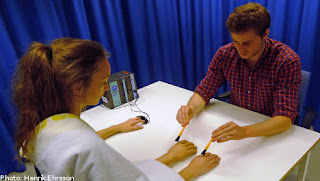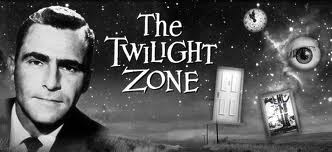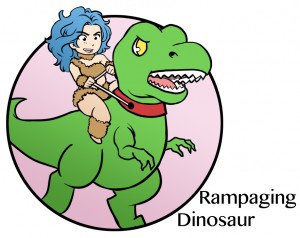The human brain is a strange organ. Simultaneously the seat of all those intangible things that make us human as well as a very physical organ, mankind has been hard at working trying to decode it since we first learned of its importance. But the more that we research it the stranger things we discover.
One of the more interesting things about it is how easily it is confused or muddles our perception of the world around us. Sometimes, in fact, it actively leads us astray without us noticing. For some comedic examples of this check out Cracked.com’s article on how your brain can mess with your head.
 |
| It’s all just there to trick you |
Recently scientists in Stockholm have figured out a way to trick people’s brains into thinking that they have a third appendage. They were able to accomplish this by rubbing the subjects hand and the prosthetic rubber hand next to it at the same time with synchronized strokes of the two brushes. Since the brain can’t figure out which hand is actually the subjects it simply incorporates both hands into its sense of proprioception, or image of the body.
 |
This is despite the fact that only one hand is attached to the body and receiving sensory input. But older studies, done in the 70’s, show that the brain is even more adept at confusion than we might think, especially when parts of it are damaged.
Michael S. Gazzaniga discovered that patients who had damage to the corpus callosum, the part of the brain that links the two hemispheres of the brain together and helps regulate communication between them, developed what almost seemed to be two separate brains within their minds. Most of these patients had had their corpus callosum severed on purpose as a last ditch effort to help them with their epilepsy.
Now, before we go further to discuss Gazzaniga’s findings, it is important to note that for most physical processes the left side of the brain controls the right side of the body and vice versa. This will become important in a moment. It also seems that, to these earlier researches at least, language and speech seemed to be primarily centered in the left hemisphere (the section of the brain that controls the right side of the body).
 |
| Apparently one side is happy fun land and the other is boring gray drudgery |
Well, Gazzaniga discovered that once the corpus callosum was cut visual information stopped moving freely between the hemispheres. If the visual field was divided so that images were only displayed to one hemisphere of the brain interesting phenomena occurred. When an image was displayed to the right visual field (the left, language center, of the brain) the subjects didn’t have any problem at all telling the researchers what they saw. Subjects had been given a button near each hand and instructed to push the button whenever they saw something, pushing the button with the right hand when they saw things with their right eye for example.
But when Gazzaniga and his colleague Roger W. Sperry displayed images in the left visual field it was as if the subjects suddenly had gone blind. They couldn’t describe any of the images that they viewed and were adamant that they didn’t see anything at all.
 |
| As blind as this guy |
But even as the speaking brain, the left side, wasn’t aware of the visual stimuli that the right side was seeing, and argued quite intensively that it wasn’t there at all, the left hand still faithfully pushed the button every time pictures appeared.
The brain saw the images, but it couldn’t talk about them. And the individual, when asked about them, didn’t realize that they saw them in the first place.
 |
| Nothing to see here. |
What’s even stranger is that given the chance, the left brain doesn’t merely ignore what is presented to the right brain. It will also actively create memories and logical paths to explain away that stimuli.
The experimenters presented a series of images to the subjects. The first two images were shown to separate hemispheres, a chicken claw to the left and a snow scene to the right. He was then asked to choose two images that fit with the previous images. He chose correctly, a snow shovel with the left hand and a chicken with the right.
But when he was asked why he chose those images it was as if he had never seen the snow scene. Instead he said: “Oh, that’s simple. The chicken claw goes with the chicken, and you need a shovel to clean out the chicken shed.”
The left brain was aware that a choice had been made by its other half, but not knowing why that choice was made it created an explanation instantaneously without the subject ever being aware of the fact that he was lying.
 |
| It’s all a lie! |
Although this has been recently challenged (especially by John McCrone as reported in the New Scientist in 2000) it is theorized that problems like this arise from our brain’s tendency towards lateralization, or specialization in each of the hemispheres. It seems as if our brain has specialized carry certain functions on each side of the brain rather than both sides of the brain carrying similar functions, as seems to be the case in animals like primates.
 |
| Sometimes leading to an unbalanced load… |
Why would this be the case? It doesn’t seem to be an evolutionary advantage, because when damage is done to one of the sides important processes might be lost, although there is evidence that the opposing hemisphere may eventually learn to compensate for the lost areas.
One theory is that as we grew and developed new skills as a species space in the brain started to come at a premium. Eventually space got so scarce that in order to develop new skills the brain decided to concentrate certain functions in one hemisphere rather than including them in both.
Whatever the reason, though, experiments like these seem to suggest that it is possible to have two entirely different brains and worlds within the same mind and never be fully aware of the fact consciously. And if our brains can’t be trusted to impartially tell us the truth of our surroundings, how can we be sure of anything at all?
 |
| Da doo doo doo doo doo doo doo doo… |

